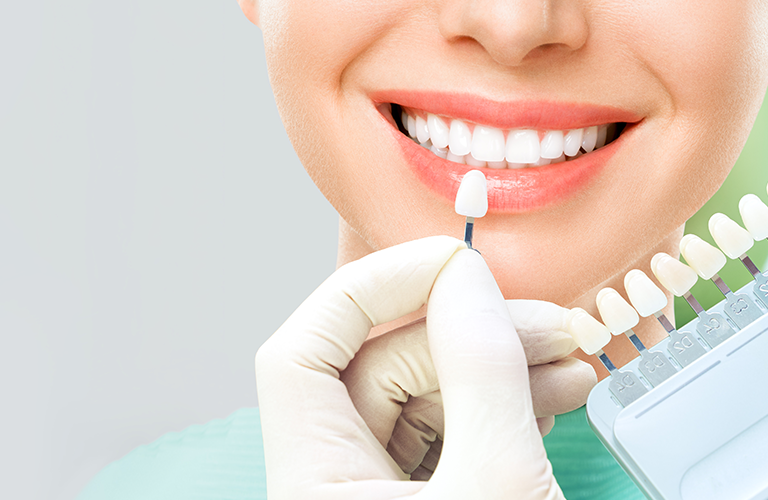For individuals seeking to enhance the beauty and health of their smile, cosmetic dentistry procedures Andover, MA, offer a range of innovative solutions. In recent years, minimally invasive procedures have revolutionized the field of cosmetic dentistry, providing patients with faster, more comfortable, and more effective treatments.
By combining cutting-edge technology with gentle, conservative techniques, minimally invasive cosmetic dentistry procedures, can help patients achieve the smile of their dreams without sacrificing comfort or convenience.
The Evolution of Cosmetic Dentistry
Traditional cosmetic dentistry often relied on invasive procedures, such as crowns, bridges, and veneers, which required significant tooth preparation and alteration. While these procedures were effective in achieving aesthetic improvements, they often came with drawbacks, including tooth sensitivity, increased risk of decay, and lengthy recovery times.
The Rise of Minimally Invasive Procedures
Minimally invasive procedures in cosmetic dentistry have revolutionized the way dentists approach aesthetic treatments. These techniques prioritize preserving tooth structure, reducing trauma to the surrounding tissues, and promoting faster healing times.
Some of the most popular minimally invasive procedures in cosmetic dentistry include:
- Composite Bonding: A tooth-colored resin is applied to the tooth to repair chips, cracks, or gaps. This procedure is quick, painless, and requires minimal tooth preparation.
- Dental Contouring: A minor adjustment is made to the shape or size of the tooth to improve its appearance. This procedure is often used to correct minor imperfections, such as uneven teeth or slight overlaps.
- Teeth Whitening: A non-invasive procedure that uses a bleaching agent to lighten the teeth. This procedure can be performed in-office or at home with custom-fitted trays.
- Laser Dentistry: A minimally invasive procedure that uses a laser to remove decay, reshape the gum tissue, or whiten the teeth.
- No-Prep Veneers: A type of veneer that requires minimal to no tooth preparation. These veneers are bonded to the front of the tooth to improve its appearance.
Benefits of Minimally Invasive Procedures
Minimally invasive procedures in cosmetic dentistry offer numerous benefits, including:
- Reduced Recovery Time: Minimally invasive procedures typically require less recovery time, allowing patients to return to their normal activities quickly.
- Less Discomfort: These procedures often involve less discomfort and pain, as they require minimal tooth preparation and alteration.
- Preservation of Tooth Structure: Minimally invasive procedures prioritize preserving tooth structure, reducing the risk of decay, and promoting long-term oral health.
- Cost-Effective: Many minimally invasive procedures are more cost-effective than traditional cosmetic dentistry procedures.
Applications of Minimally Invasive Procedures
Minimally invasive procedures in cosmetic dentistry have a wide range of applications, including:
- Correcting Minor Imperfections: Minimally invasive procedures are ideal for correcting minor imperfections, such as chips, cracks, or gaps.
- Improving Tooth Color: Teeth whitening and bonding can be used to improve tooth color and brightness.
- Reshaping the Smile: Dental contouring and no-prep veneers can be used to reshape the smile and improve the appearance of the teeth.
- Restoring Damaged Teeth: Minimally invasive procedures, such as composite bonding and laser dentistry, can be used to restore damaged teeth.
Future Directions
The future of minimally invasive procedures in cosmetic dentistry is exciting and rapidly evolving. Some of the emerging trends and technologies include:
- Advances in Digital Dentistry: Digital dentistry is revolutionizing the way dentists diagnose and treat patients. Advances in digital dentistry will enable more precise and efficient minimally invasive procedures.
- Nanotechnology: Nanotechnology is being explored for its potential applications in minimally invasive dentistry. Nanoparticles can be used to deliver targeted treatments and promote tissue regeneration.
- Bioactive Materials: Bioactive materials are being developed to promote tissue regeneration and healing. These materials can be used in minimally invasive procedures to enhance the recovery process.
Bottom Line
Minimally invasive procedures in cosmetic dentistry have transformed the way dentists approach aesthetic treatments. These innovative techniques prioritize patient comfort, reduce recovery time, and minimize the risk of complications. As technology continues to evolve, we can expect to see even more exciting developments in the field of minimally invasive cosmetic dentistry.





